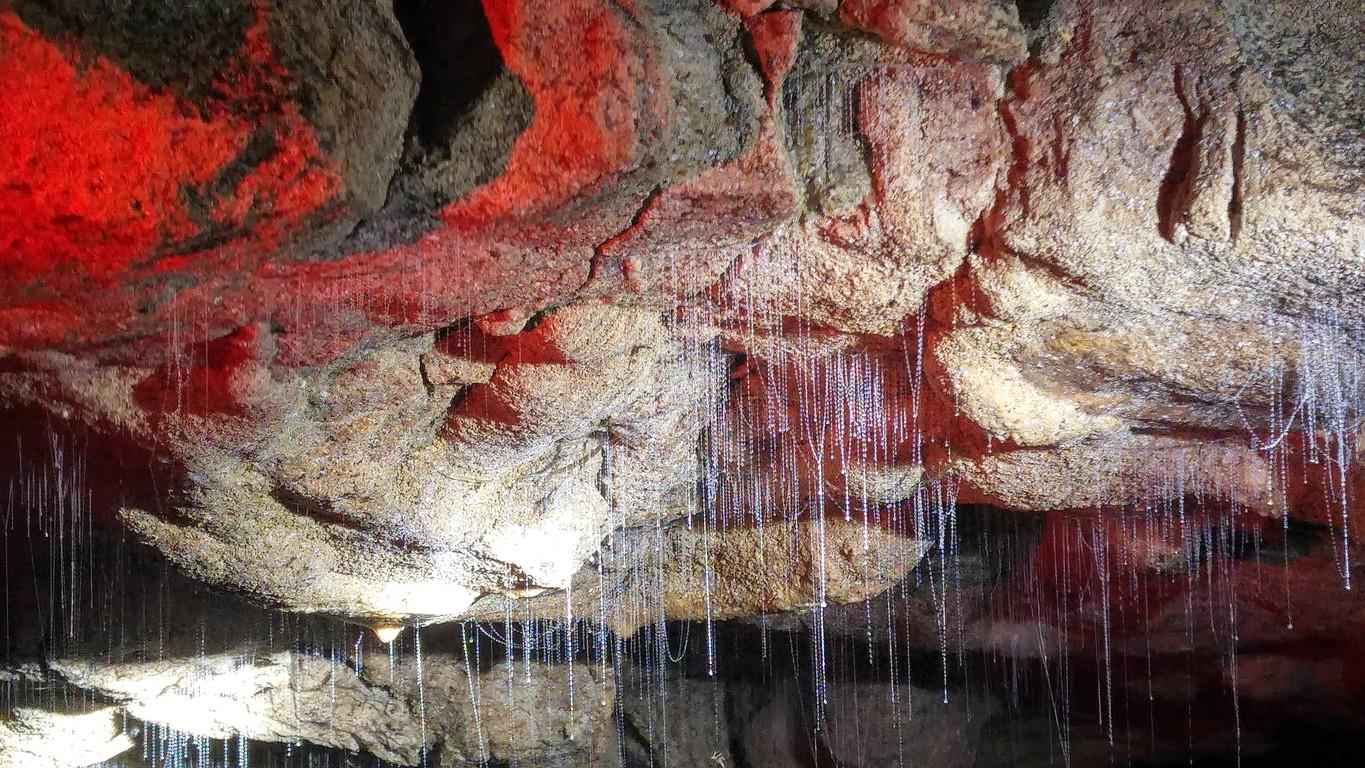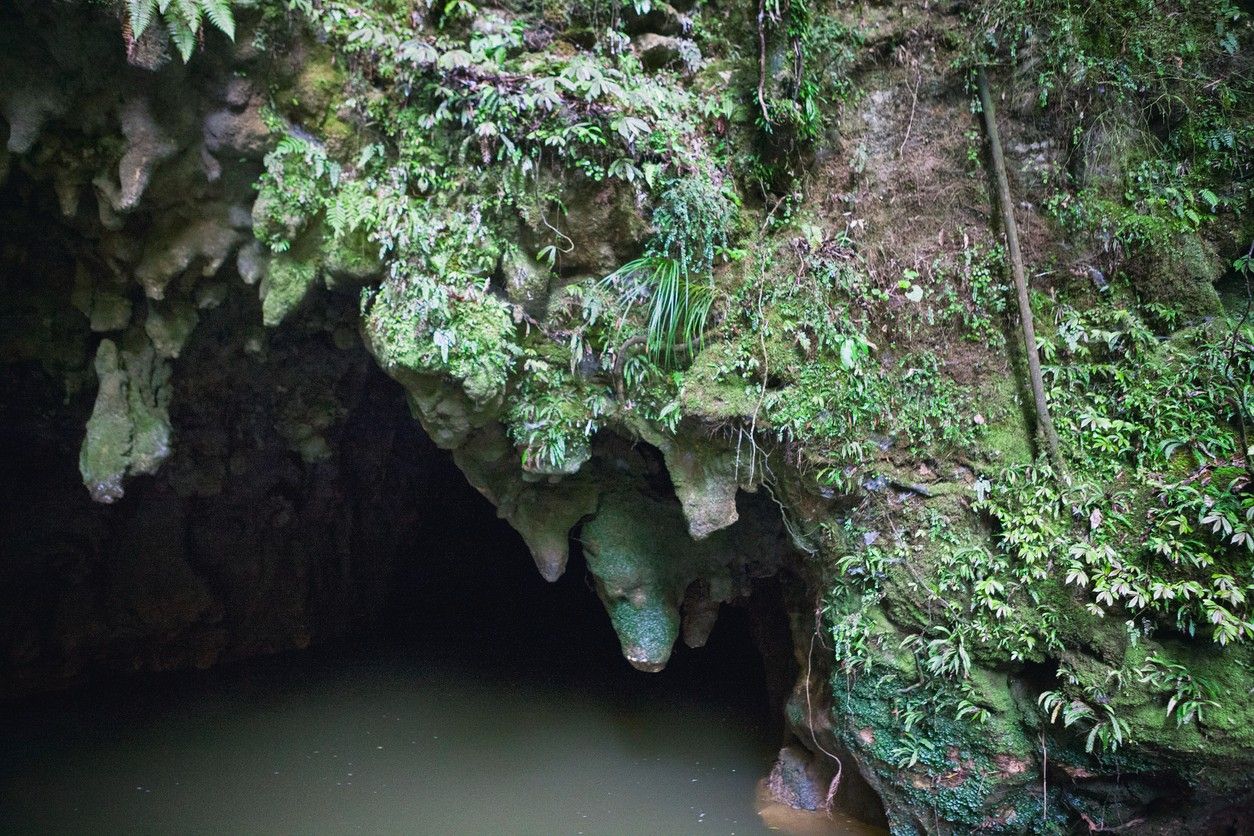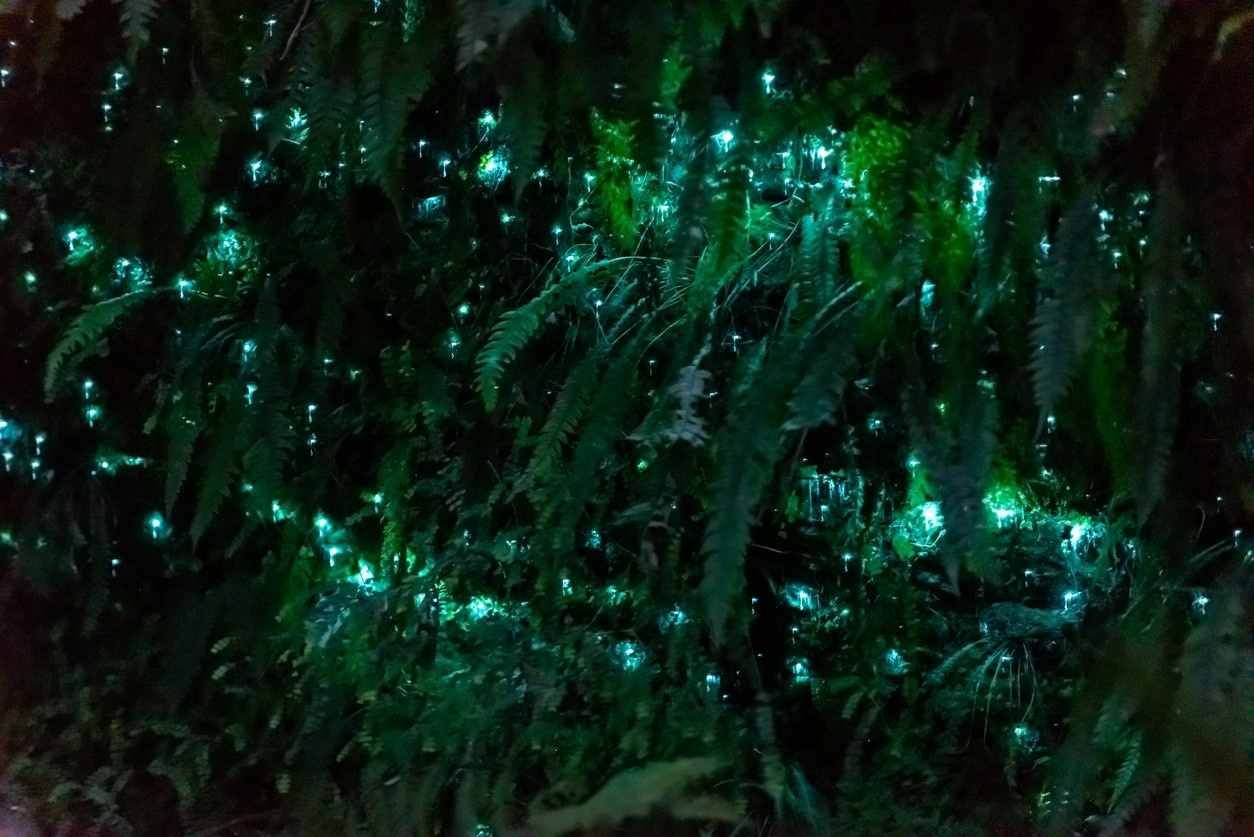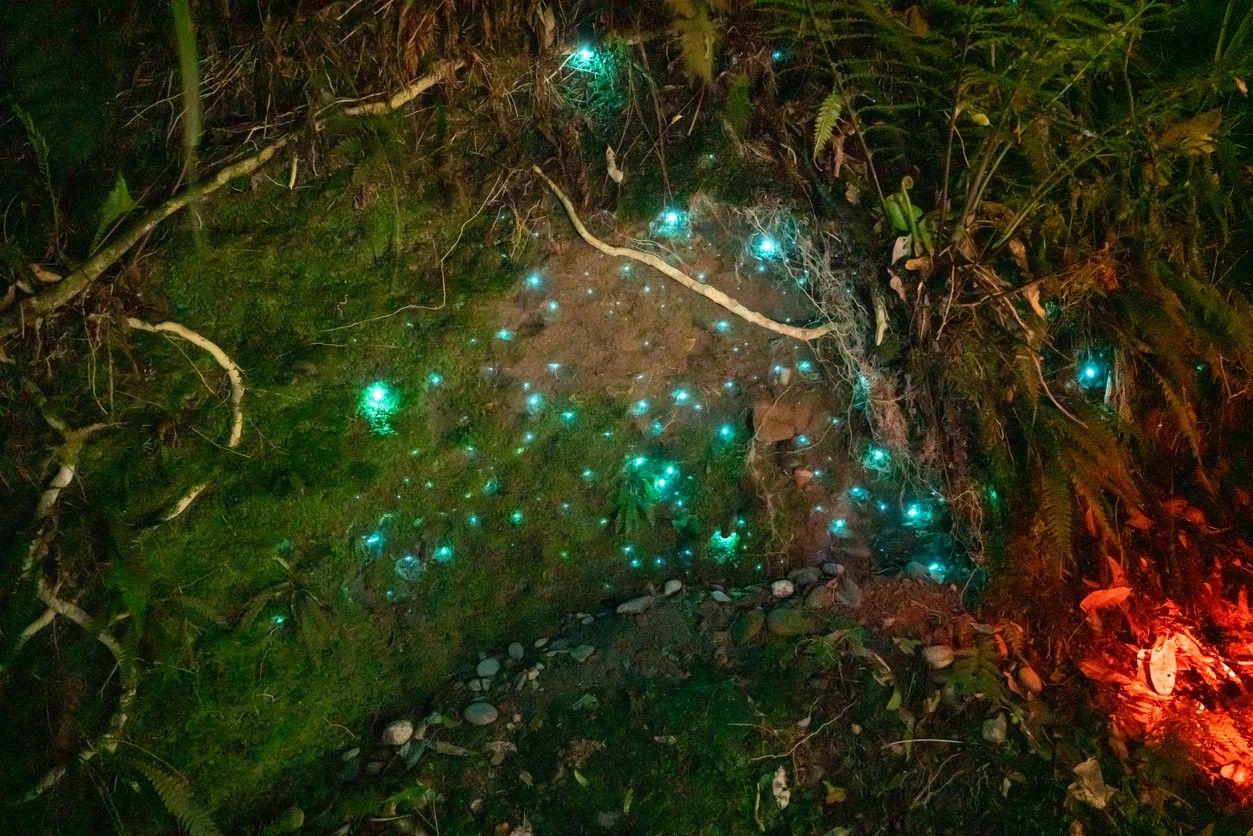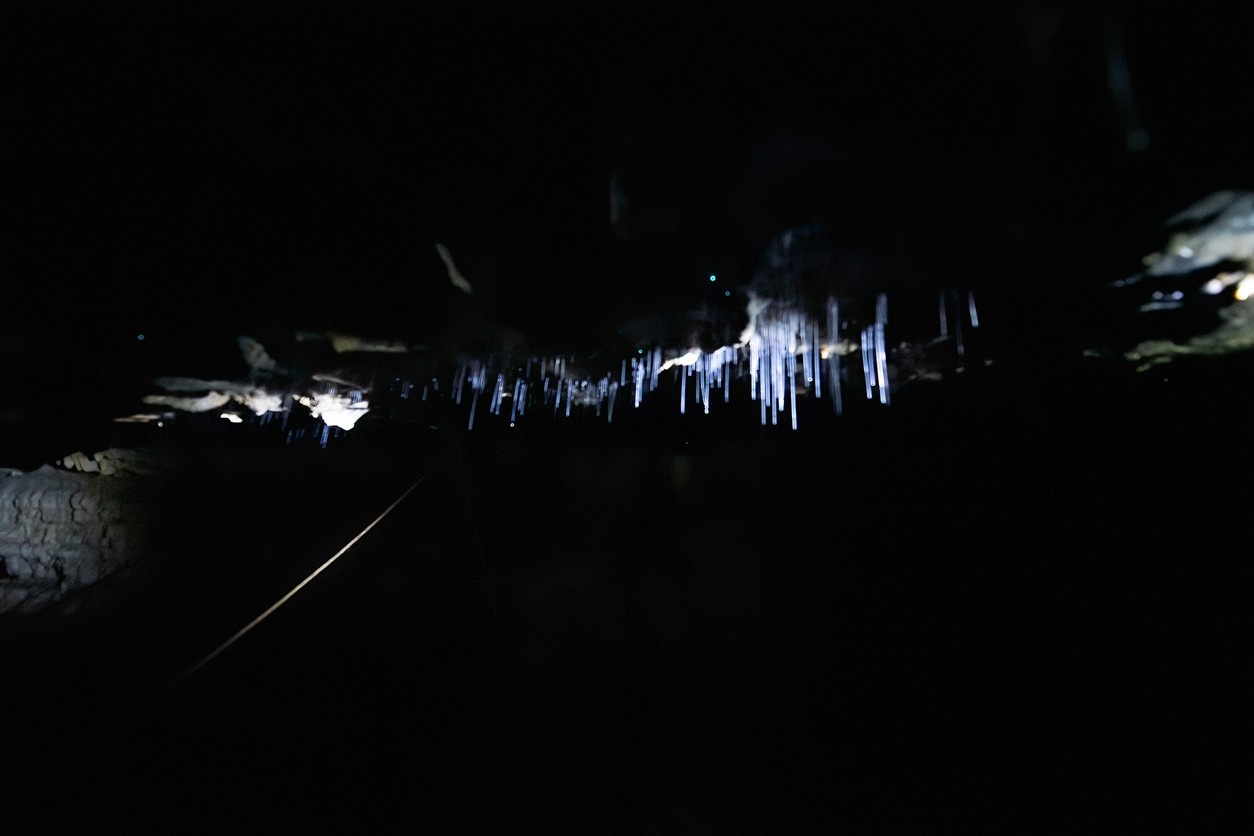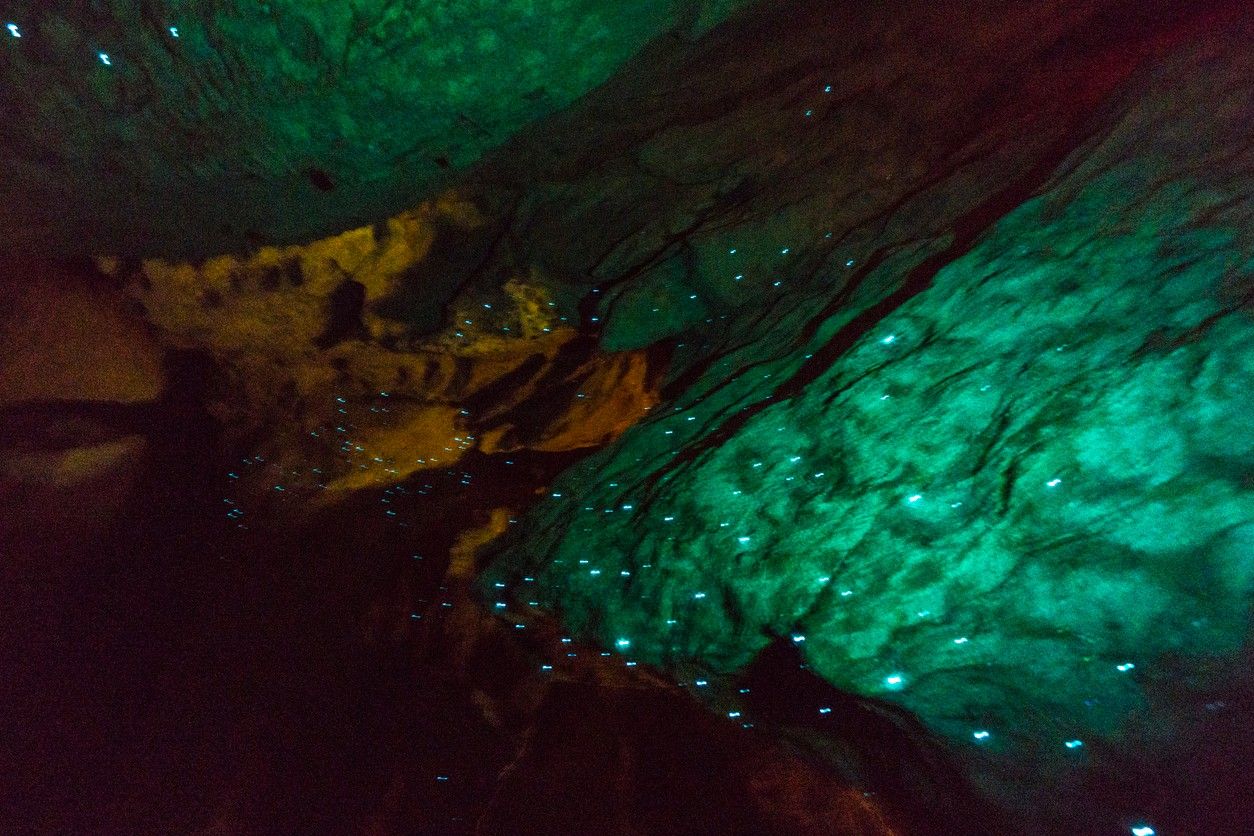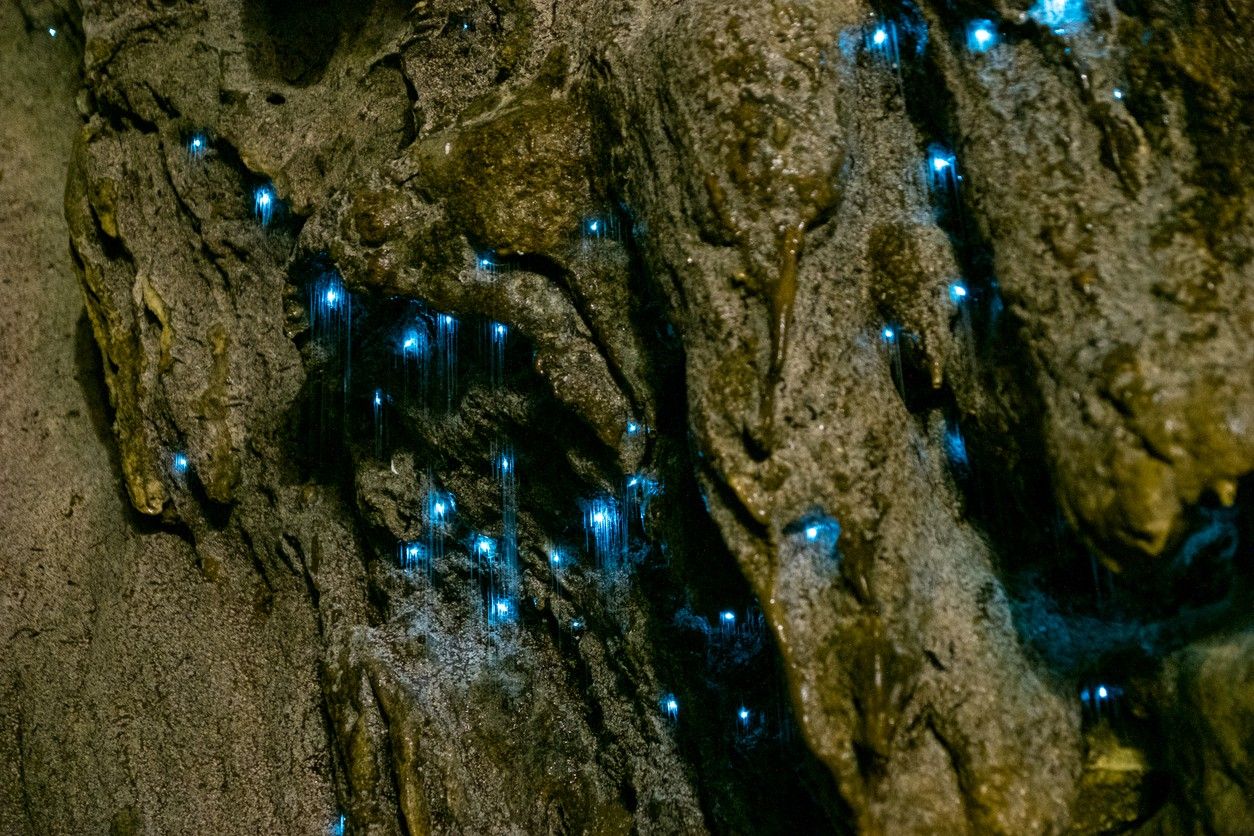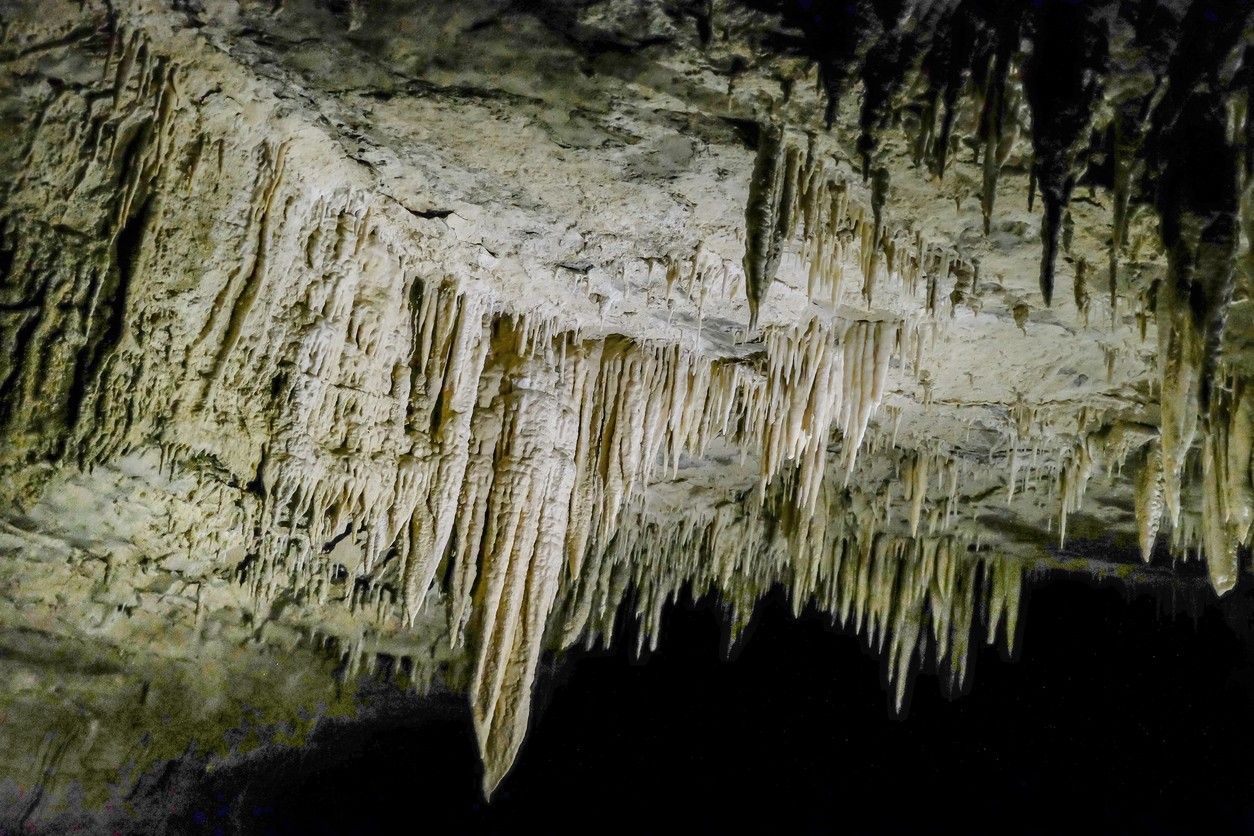The Waitomo Glowworm Caves are a must-see natural wonder located on the North Island of New Zealand. These magnificent limestone caves are home to thousands of bioluminescent glowworms that illuminate the underground grottos with their mesmerising blue-green light. Visiting the Waitomo Caves is an unforgettable experience that allows you to witness one of nature's most enchanting displays. The Waitomo Glowworm Caves are situated near the small village of Waitomo, about 200 kilometres south of Auckland. The name "Waitomo" comes from the Māori words "wai" meaning water and "tomo" meaning hole or shaft. The caves were first explored in 1887 by local Māori Chief Tane Tinorau and English surveyor Fred Mace. They navigated the subterranean caverns and underground rivers by candlelight and discovered the glowworm colonies that would make the caves famous. The Waitomo Glowworm Caves are a popular tourist attraction, drawing visitors from around the world. Guided tours take you through the cave system, which stretches over 45 kilometres, though only a small portion is open to the public. As you make your way through the caves, you'll learn about their fascinating geology, history, and the unique ecosystem that allows the glowworms to thrive. The highlight of any visit to the Waitomo Caves is undoubtedly the glowworm grotto. Here, thousands of glowworms cling to the cave ceiling, creating a starry canopy of light above the underground river. Visitors board a small boat and drift silently beneath the glowworms, marvelling at the otherworldly beauty of the scene.
The Science Behind the Glowworms
One of the most captivating aspects of visiting the Waitomo Glowworm Caves is delving into the fascinating science behind the bioluminescent display. The glowworms that illuminate the cave ceilings are actually in the larval stage of a small fly species known as the fungus gnat (Arachnocampa luminosa). These tiny larvae, measuring a mere 3-5 mm when they first emerge from their eggs, have evolved an extraordinary adaptation that enables them to flourish in the dark, damp environment of the caves. The secret to the glowworms' success lies in their remarkable ability to produce a captivating blue-green light through a complex chemical reaction within their bodies. This enchanting bioluminescence is generated by the interaction of an enzyme called luciferase with other compounds, resulting in a cool light that emits minimal heat. The glowworms harness this luminescence to attract their prey, which consists primarily of small flying insects drawn to the alluring glow. To ensnare their unsuspecting meals, the glowworms construct intricate silk threads adorned with sticky mucus droplets, which dangle from the cave ceiling like delicate fishing lines. These luminescent strands can vary in length depending on the specific habitat, with some extending up to an impressive 50 cm in the tranquil, still air of the caves. As curious flying insects, mesmerised by the glowworms' enticing light, venture too close, they become hopelessly entangled in the adhesive threads. The hungry larvae then reel in their catch, devouring their prey and gaining the sustenance needed to maintain their captivating glow.
The unique bioluminescence of the Waitomo glowworms is remarkably energy-efficient, enabling the larvae to emit their light continuously for months without requiring additional food. This adaptation is particularly advantageous in the nutrient-poor environment of the caves, where food sources can be scarce. Astonishingly, the glowworms have even evolved the ability to survive being submerged underwater for several days during occasional flooding events within the caves, showcasing their incredible resilience. Scientists have conducted extensive studies on the Waitomo glowworm population to gain a deeper understanding of their ecology and to develop effective conservation strategies. The caves are meticulously monitored, with close attention paid to critical factors such as air quality, temperature, and humidity to ensure an optimal environment for the glowworms to thrive. Additionally, visitor numbers are carefully managed to minimise any potential disturbances to the delicate ecosystem, allowing the glowworms to continue their enchanting display for generations to come. Witnessing the breathtaking light show created by thousands of glowworms in the Waitomo Caves is an unforgettable experience that ignites a sense of wonder and curiosity about the marvels of the natural world. The science behind these tiny, luminous creatures adds an extra layer of appreciation for their incredible adaptations and the intricate web of life that exists within the subterranean realm of Waitomo. As visitors marvel at the glowworms' performance, they gain a deeper understanding of the delicate balance and resilience of life in even the most challenging environments.
The History and Cultural Significance of The Caves
The Waitomo Glowworm Caves hold a profound significance in New Zealand's rich history and cultural heritage, with their importance extending far beyond their status as a popular tourist attraction. For centuries, these enchanting caves have been intimately connected to the indigenous Māori people of the region, serving as a sacred site of spiritual, practical, and cultural value. The very name "Waitomo" is derived from the Māori words "wai," meaning water, and "tomo," meaning hole or shaft, reflecting the area's distinctive limestone formations and the subterranean rivers that flow through them. The local Māori tribes, notably the Ngāti Maniapoto and Ngāti Tama, have long acted as the devoted guardians and caretakers of the Waitomo Glowworm Caves. These subterranean caverns held immense spiritual significance for the Māori, who utilised them for a variety of purposes, including shelter, storage, and even as sacred burial grounds. Evidence suggests that the caves were used by the Māori as far back as the 16th century, highlighting the enduring connection between the indigenous people and this remarkable natural wonder.
The first documented exploration of the Waitomo Glowworm Caves by non-Māori occurred in 1887 when Māori Chief Tane Tinorau and English surveyor Fred Mace embarked on a comprehensive survey of the underground system. Guided by the flickering light of candles atop a raft, they ventured deep into the heart of the caves, discovering the breathtaking Glowworm Grotto and the intricate limestone formations that adorn the caverns. Their exploration laid the foundation for the caves' future as a cherished natural attraction. As word of the wonders of Waitomo spread, the caves began to attract visitors from far and wide, captivated by the ethereal beauty of the glowworms and the awe-inspiring subterranean landscapes. In 1889, Chief Tane Tinorau and his wife Huti recognised the potential for sharing this natural marvel with others and began leading guided tours through the caves for a modest fee. The popularity of these tours grew steadily, and by the late 19th century, the New Zealand government took proactive steps to protect and preserve the site for future generations.
In 1906, the Waitomo Glowworm Caves were placed under government administration to combat vandalism and ensure their long-term conservation. The following years saw significant investments in infrastructure to accommodate the growing number of visitors, including the construction of the iconic Waitomo Caves Hotel in 1910. This development marked a significant milestone in the caves' history, solidifying their status as a premier tourist destination. The Waitomo Glowworm Caves are managed through a unique partnership between the local Māori community and Tourism Holdings Limited. This collaborative approach ensures that the cultural significance of the caves is respected, preserved, and celebrated, while also generating economic benefits for the region. The Māori continue to play a vital role in the stewardship of the caves, sharing their knowledge, stories, and traditions with visitors from around the world.
Exploring the Waitomo Caves
Visiting the Waitomo Glowworm Caves is an adventure that offers something for everyone. Whether you're a nature lover, a thrill-seeker, or simply someone who appreciates the beauty of the natural world, there are plenty of ways to explore the caves and surrounding areas. The most popular way to experience the Waitomo Caves is through a guided tour. These tours take you through the main caverns, including the glowworm grotto, and provide fascinating insights into the geology, history, and ecology of the caves. Tours range from gentle walking tours suitable for all ages and fitness levels to more adventurous options that involve climbing, abseiling, and black water rafting.
There are also opportunities to go caving in the Waitomo region. These tours take you off the beaten path and into some of the lesser-known caves in the area. You'll get to crawl, climb, and squeeze your way through tight passages and underground streams, discovering hidden chambers and formations along the way. Caving tours are physically demanding but incredibly rewarding, offering a unique perspective on the subterranean world. Above ground, the Waitomo area is also worth exploring. The surrounding countryside is characterised by rolling hills, lush pastures, and native bush. There are plenty of hiking and walking trails in the area, ranging from short scenic walks to multi-day treks. The Waitomo Village itself is a charming spot to spend some time, with a variety of cafes, restaurants, and shops to explore. No matter how you choose to experience the Waitomo Glowworm Caves, it's sure to be a memorable adventure. The combination of natural beauty, scientific wonder, and adrenaline-pumping activities makes it a destination that appeals to a wide range of visitors. Whether you're a local looking for caves near me or a traveller from the other side of the world, the Waitomo Caves are a must-see attraction that should be on every New Zealand itinerary.
Protecting and Preserving the Waitomo Caves
As a fragile and unique ecosystem, the Waitomo Glowworm Caves require careful management and protection to ensure their long-term survival. The caves are home to a delicate balance of life, from the glowworms themselves to the various microorganisms and invertebrates that inhabit the underground streams and pools. Any disturbance to this ecosystem could have far-reaching consequences for the health and vitality of the caves. One of the main threats to the Waitomo Caves is human impact. The caves are a popular tourist attraction, with hundreds of thousands of visitors each year. While tourism provides important economic benefits to the local community, it also puts pressure on the cave environment. Visitors can inadvertently introduce contaminants, alter the temperature and humidity of the caves, and disturb the glowworms and other cave fauna. To mitigate these impacts, the Waitomo Caves are carefully managed by a team of experts, including scientists, conservationists, and tourism professionals. Visitor numbers are limited to ensure that the caves are not overcrowded, and strict guidelines are in place to minimise the impact of human activity. Visitors are required to follow designated paths, refrain from touching the cave walls or formations, and avoid using flash photography or other bright lights that could disturb the glowworms.
In addition to managing visitor impacts, the Waitomo Caves are also the focus of ongoing scientific research and conservation efforts. Scientists are studying the unique ecology of the caves, including the biology and behaviour of the glowworms, to better understand how to protect and preserve this fragile ecosystem. Conservation measures include monitoring the health of the glowworm populations, controlling invasive species, and restoring damaged cave formations. The protection and preservation of the Waitomo Glowworm Caves is a collaborative effort that involves the local Māori community, government agencies, tourism operators, and scientific researchers. By working together, these stakeholders are ensuring that the caves will continue to be a source of wonder and inspiration for generations to come. As visitors to the caves, we all have a role to play in this effort by respecting the environment, following guidelines, and supporting conservation initiatives. By doing so, we can help to ensure that the magic of the Waitomo Caves endures for centuries to come.
FAQs
What is the best time to visit the Waitomo Glowworm Caves?
The caves are open year-round, and the glowworms are always visible. However, the caves can be busier during the summer months (December to February) and during school holidays. To avoid crowds, consider visiting in the early morning or later in the evening.
How long does the guided tour of the Waitomo Glowworm Caves take?
The guided walking tour through the Waitomo Glowworm Caves takes approximately 45 minutes to an hour.
Are the caves suitable for children?
Yes, the guided walking tour is suitable for children of all ages. However, for safety reasons, children under 5 years old are not allowed on the blackwater rafting tours.
Do I need to book tickets in advance?
While it's possible to purchase tickets on the day, it's recommended to book in advance, especially during peak season, to ensure your preferred time slot is available.
What should I wear and bring for the cave tours?
Comfortable walking shoes with good traction are essential, as the paths in the caves can be wet and slippery. The temperature inside the caves is around 14°C (57°F) year-round, so a light jacket or sweater is recommended. For the blackwater rafting tours, swimwear and a towel are required, and all other necessary equipment is provided.
Are there any physical requirements for the cave tours?
The guided walking tour is relatively easy and suitable for most fitness levels. However, there are some stairs and uneven surfaces to navigate. The blackwater rafting tours require a moderate level of fitness and the ability to swim.
Can I take photos inside the caves?
Photography is allowed in the caves, but flash photography is strictly prohibited as it can disturb the glowworms. For the best results, use a camera with manual settings and a high ISO.
Are there any dining options at the Waitomo Glowworm Caves?
The Waitomo Glowworm Caves Visitor Centre has a cafe that serves light meals, snacks, and refreshments. There are also several dining options in the nearby Waitomo Village.
How far are the Waitomo Glowworm Caves from major cities?
The caves are located about 200 km (2.5 hours drive) south of Auckland, 80 km (1 hour drive) south of Hamilton, and 140 km (2 hours drive) west of Rotorua.
Are there accommodation options near the Waitomo Glowworm Caves?
Yes, there are several accommodation options in the Waitomo area, ranging from budget-friendly hostels to luxury lodges. The Waitomo Caves Hotel, located next to the visitor centre, offers comfortable rooms and dining options.
Related Articles

Let us know you agree to cookies
We use marketing, analytical and functional cookies as well as similar technologies to give you the best experience. Third parties, including social media platforms, often place tracking cookies on our site to show you personalised adverts outside of our website.
We store your cookie preferences for two years and you can edit your preferences via ‘manage cookies’ or through the cookie policy at the bottom of every page. For more information, please see our cookie policy.
